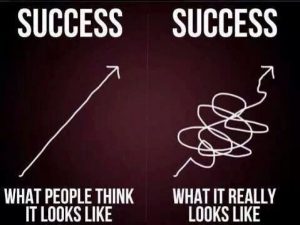Go to tutorials because you can learn different solutions from different instructors and choose which line of thinking works best for you to imitate when solving problems.
Mary – former Math 100 student
University mathematics problems are often multi-step problems requiring planning and systematic techniques. While there is no single recipe for solving problems, here are some general guidelines that can often help you be more effective:
- Start by writing down what is given in the problem, and what is asked for in the problem. If any quantities don’t have symbols attached to them already, create your own symbols for them. Make sure to write everything in mathematically precise notation. Put question marks next to the unknown quantities.
- Next, make sure you understand all the technical definitions and notations used in the problem. If there are any definitions that are unfamiliar to you, look them up and write a short version of them on the page where you are solving the problem. This is a good habit to get into since occasionally grading schemes will award one mark for writing down the relevant definition.

- If there are still symbols or terminology that are unfamiliar to you, ask a friend for help, post a question on Piazza, or bring your question to the MLC or instructor’s office hours.
- When applicable, use a diagram or graph to visualize what is happening in the problem. Note that although you can use graphing software during homework, you do not want to get into the habit of over-relying on graphing software or graphing calculators, as these will not be allowed during a test.
- If stuck, try to solve a special case of the problem. For example, if there are two variables in the problem, try to solve the case where one of the variables is a constant. Looking at special cases like this can often help you pinpoint the unique difficulties of the more general case.
- If still stuck, look at the solution to a similar problem from a textbook or elsewhere. Try to explain each step of the solution for this other problem to yourself. Try to understand how your problem is similar to the example you are studying, and how it is different. Do not try to copy line for line the example in the textbook, since this will lead to the bad habit of being inflexible with your problem solving techniques. Rather, try to understand the purpose of each step in the example.
- Once you have answered the problem, take the time to ask if the answer makes sense. For example, if the answer is a number, do the sign and magnitude of the number make sense?
 Remember that the most important trait in effective problem solving is not natural talent, but perseverance and the willingness to get help from others. If you combine these traits with effective study habits and the strategies above, you will have a very good chance of achieving your goals in your course.
Remember that the most important trait in effective problem solving is not natural talent, but perseverance and the willingness to get help from others. If you combine these traits with effective study habits and the strategies above, you will have a very good chance of achieving your goals in your course.
